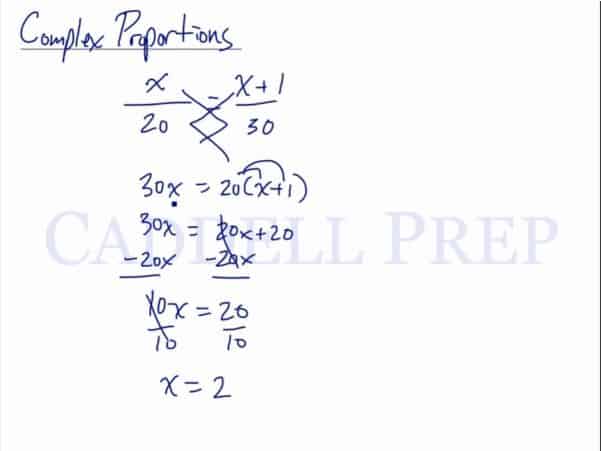In this video, we will be learning how to solve complex proportions (variables on both sides) using cross-multiplication. After you finish this lesson, view all of our Algebra 1 lessons and practice problems.
Example of Solving a Complex Proportion
First we cross-multiply
Then we distribute the 20 to the x and 1
Subtract 20x from both sides to isolate x
Divide by 10 on both sides
Example 1
First, distribute to each of the terms inside the parenthesis
Then, cross multiply
Distribute to each of the terms inside the parenthesis
Subtract from both sides to isolate
Divide by on both sides
Therefore,
Example 2
First, distribute to each of the terms inside the parenthesis
Then, cross multiply
Distribute constants to each of the terms inside the parenthesis
Subtract from both sides
Subtract
Divide on both sides
Therefore,
Video-Lesson Transcript
Let’s go over complex proportions.
For example:
What makes this complex is that we have one variable on both sides of the equation.
We’re just going to do the same method which is to cross-multiply.
To solve the equation on the right, we have to distribute on each of term.
Now we have
Let’s get all the variables on one side by subtracting on both sides.
Simply solve by dividing both sides by
.
And we’ll have
Complex proportion is different from regular proportion because it has a variable on both sides of the equation.



